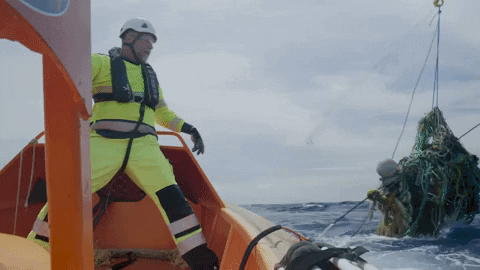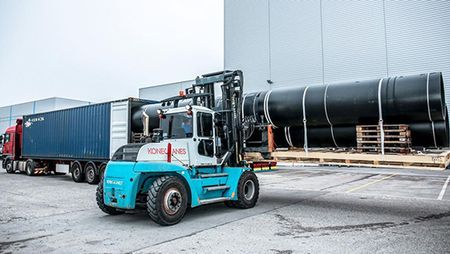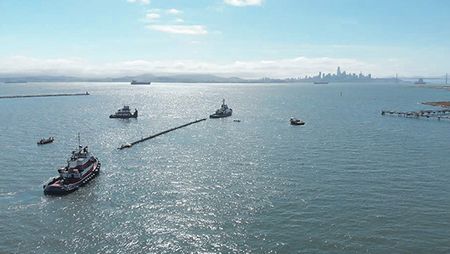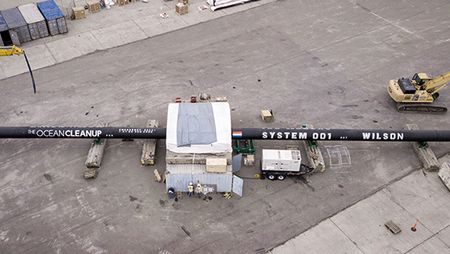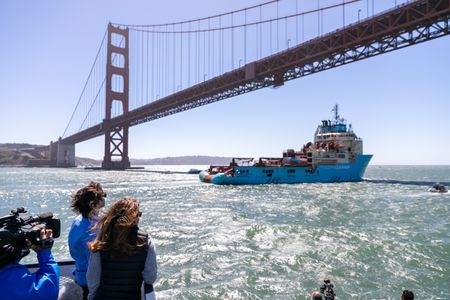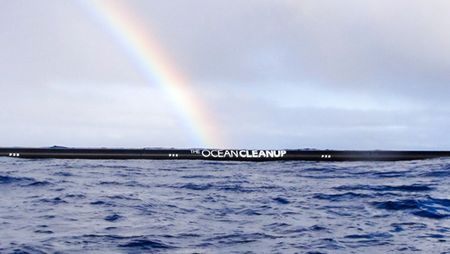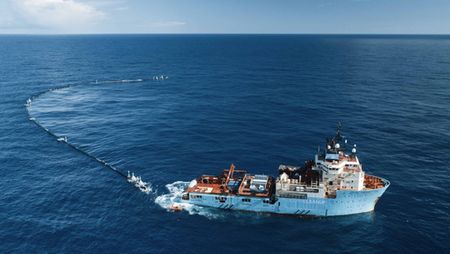
The road to the cleanup
Launched on September 8, 2018 from San Francisco, System 001 intends to prove The Ocean Cleanup’s technology in the Great Pacific Garbage Patch, the world’s largest accumulation zone of ocean plastics – situated halfway between Hawaii and California.
System 001 Overview
Launch
Launched on September 8, 2018, from San Francisco, System 001 intends to prove The Ocean Cleanup’s technology in the Great Pacific Garbage Patch, the world’s largest accumulation zone of ocean plastics – situated halfway between Hawaii and California.
Pacific Trials
Once at the test location, roughly 350 nautical miles offshore, System 001 was installed in its operational u-shape configuration for the first time. The system’s behavior was extensively monitored during this final rehearsal, for a period of 2 weeks. Based on the successful results of this trial, we took the decision to tow the System 001 will be towed the remaining ~1000 nautical miles to the Great Pacific Garbage Patch.
First mission
Once System 001 reached the patch, we deployed it into its u-shape to commence the cleanup. Extensive monitoring was carried out 24/7 to observe the system’s behavior and its surrounding environment.
We saw many factors working as intended, but also one key aspect that had room for improvement: the system was not able to retain the plastic it caught for long enough. In order to scale-up, our systems are only estimated to be emptied every 6 weeks, therefore having to retain plastic for this amount of time. Multiple tests were carried out to learn more, such as drifter tests, dye tests and extensions of the system’s closing line. Based on the results of these tests, our engineers were able to start thinking of ways to improve the technology.
Next steps
On December 29th, an 18-meter end-section had detached from the rest of the system. The crew was able to salvage the section swiftly and safely. In order to not pose safety hazards for the crew or risk further system failure, we decided to head back to the closest port immediately. The system arrived in Hilo Harbor on January 17, 2019.
After thorough investigation, the root cause was concluded: Stress concentration at the dovetail connection (between the floater and screen) due to the discontinuity between each 1-meter segment (learn more). We also believe the root cause of the system not retaining plastic efficiently is due to insufficient speed. While preparing our return to the GPGP, these lessons will be incorporated into the system design. We hope to be back at work in the patch this summer.
You are using an outdated browser! This map works best in modern browsers. For more information visit browsehappy.com
System 001 Timeline
Follow the journey of System 001 from procurement to launch, and stay informed on the latest updates.
-
October 2017
-
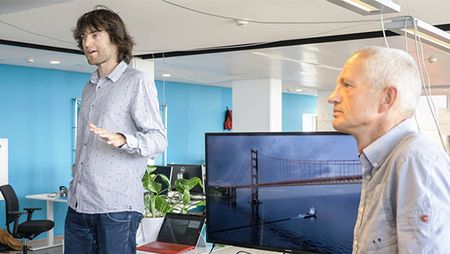 Read more
Read moreWe confirmed the final order for the first full-length floater, officially kicking off the procurement phase.
Procurement is a challenge of its own considering the scale of our system and the tight planning we're committed to follow. Finding the right suppliers, running quality checks and negotiating prices usually takes months. -
November
-
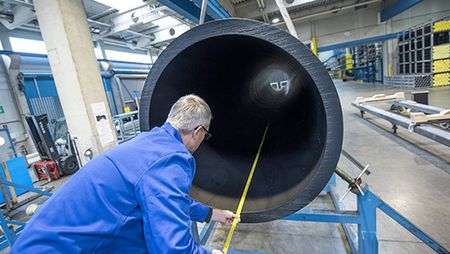 View on Facebook
View on FacebookThe floater of the first ocean cleanup system is in production. The floater is the part of the system that is responsible for catching surface plastic and keep the system afloat. Once completed it will be 600 meters in length, and have a diameter of 1.2 meters.
Other system components will follow over the next few months and will be transported to our assembly line in San Francisco. -
December
-
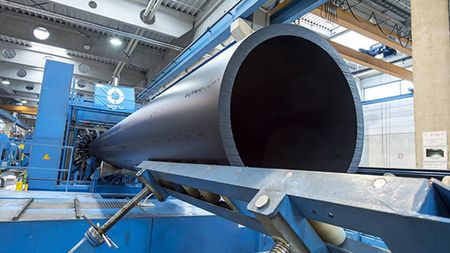
To watch this video, you need to .
For more info, check our cookie policy .
View on FacebookAll 51 sections of the first ocean cleanup system’s floater are now out of the manufacturing plant.
After final handling, they will be sent out to the assembly site in California. -
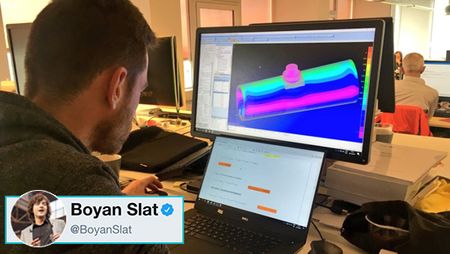 View on X
View on X"Preparing for the cleanup, next few weeks will mostly be spent on the finishing touches of the design. Final material choices, detailing connections, configuring the electrical instrumentation. Can’t wait to see it all come together."
via @boyanslat -
January 2018
-
-
February
-
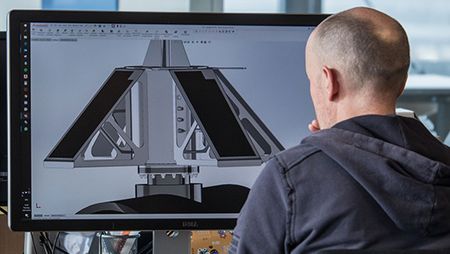 View on Facebook
View on FacebookThe engineering team is nearing final design of the first cleanup system electronics. Multiple electronic “pods" will be assembled to the floater.
Their solar panels will power everything from navigation lights and AIS to monitoring sensors and cameras. -
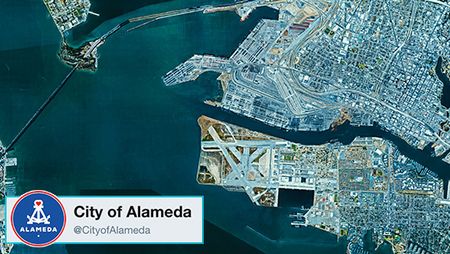 View on X
View on X"We are excited to announce that Alameda will be home to @TheOceanCleanup’s first cleanup system. This passive drifting system is set to begin cleaning plastic from the Great Pacific Garbage Patch this summer. It's time for the largest cleanup in history. #loveourisland #alamtg"
via @CityofAlameda -
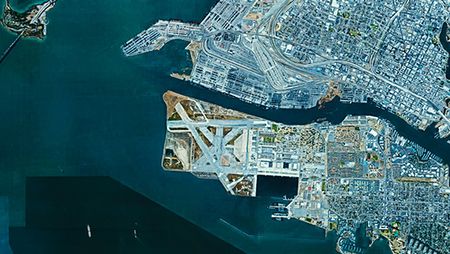 Read more
Read moreTogether with the City of Alameda, we signed a lease agreement for portions of the former Alameda Naval Air Station, a peninsula now known as Alameda Point.
Together with the City of Alameda, we signed a lease agreement for portions of the former Alameda Naval Air Station, a peninsula now known as Alameda Point. Located on San Francisco Bay, this is the site where assembly of the first cleanup system will begin within the next month. -
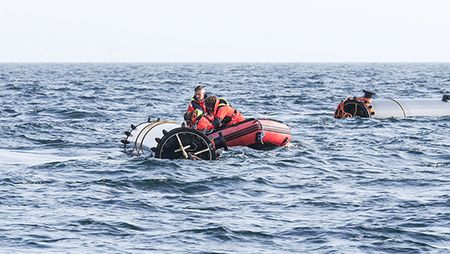 Read more
Read moreA new ocean cleanup prototype is being deployed on the North Sea today. It is one of the last steps as we prepare to launch the first cleanup system in the Great Pacific Garbage Patch this summer.
To understand how we arrived at this point, here is a brief history of the North Sea prototypes, and the reasons why we're deploying another one. -
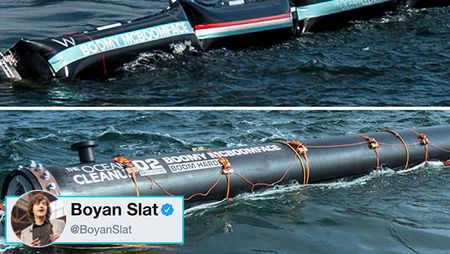 View on X
View on X"Welcoming name suggestions for Cleanup System #1. Hope we can do a better job this time than we did with the prototypes"
via @boyanslat -
March
-
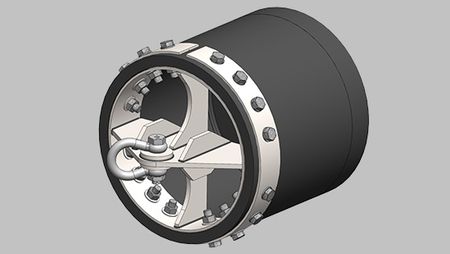
The final design of the system's towhead is confirmed.
The data gathered during the tow-test on the North Sea Prototype a week ago gave the engineers enough confidence to move ahead with this key component of the system. -
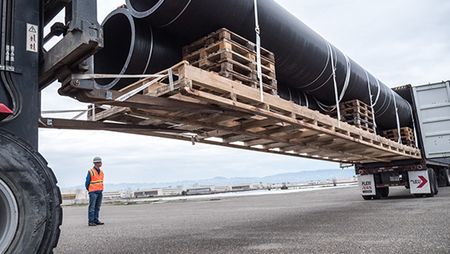 View on Facebook
View on FacebookThe first parts have safely arrived at our Alameda Yard.
We expect to commence the assembly of cleanup system #1 next week. -
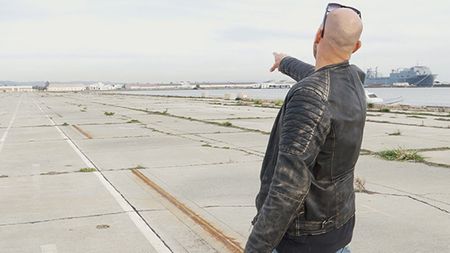
To watch this video, you need to .
For more info, check our cookie policy .
View on FacebookWe caught up with our Project Engineer on the Assembly Yard in Alameda just before the first components of cleanup system #1 arrived on site.
-

The screen production for the first cleanup system is well underway.
The first batch of 120 meters has left our manufacturing site and is now in transit to the Assembly yard. -
April
-
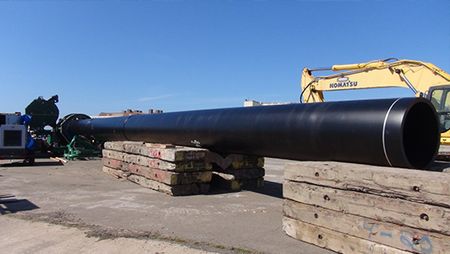 View on X
View on XThe crew has succesfully completed the first weld of two floater sections, officially marking the beginning of the assembly.
In total, 51 of these sections will be put together. At the 120-meter mark, we will take the system out for a tow-test. -
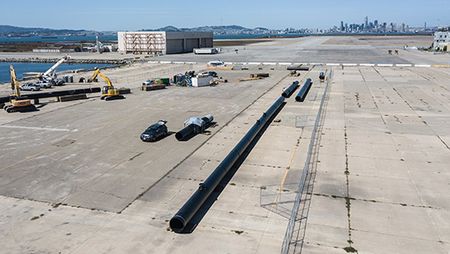 View on Facebook
View on FacebookThe assembly of the first cleanup system made great progress over the last few days.
The completion of the first 120-meter section for the upcoming tow-test is now in sight. -
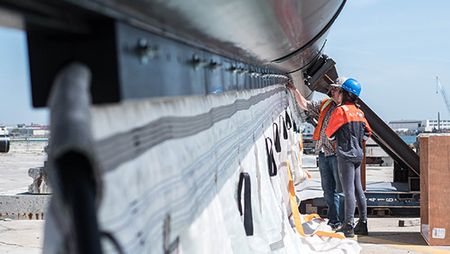 View on X
View on XHaving completed all welds for the 120-meter test section, the assembly crew has now moved into the screen assembly phase.
The tow-test is scheduled to occur within the next two weeks, weather permitting. -
May
-
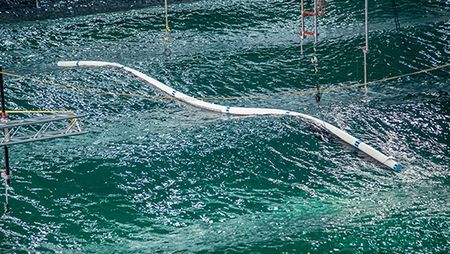 Read more
Read moreAn update on our recent scale model tests, the most advanced we have conducted so far.
Our preliminary conclusions from the tests are that the motions and forces are in the range of what we expected based on our numerical modeling. -
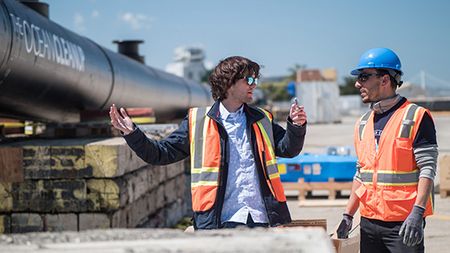
To watch this video, you need to .
For more info, check our cookie policy .
View on FacebookAs the tow test of the 120-meter unit approaches, Boyan summarizes what is left to accomplish before we launch the first cleanup system into the Great Pacific Garbage Patch later this summer.
-
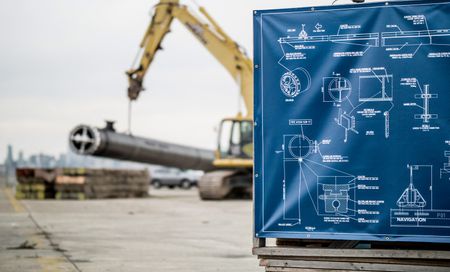 Read more
Read moreJust before we put the 120-meter section into the water for the tow test, here’s a recap of the work accomplished on the assembly yard for the first cleanup system.
-
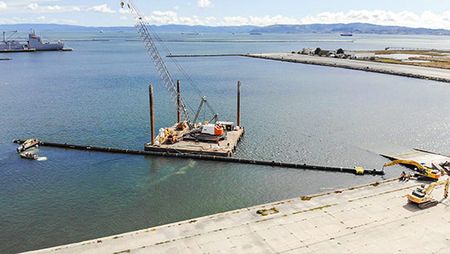 View on X
View on XThe 120-meter tow test unit is now completely lowered into the lagoon, where it will receive full inspection and final checks before departure.
-
-
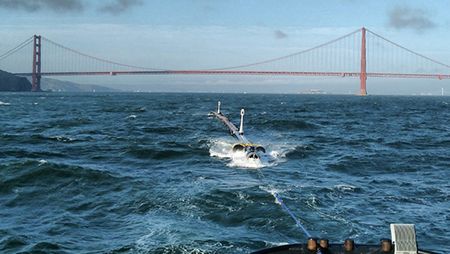 View on Instagram
View on InstagramWe have successfully initiated our 120-meter tow test unit towards its designated test pattern approximately 50 nautical miles outside of San Francisco’s Golden Gate.
-
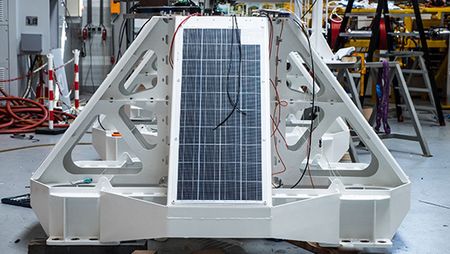 View on Facebook
View on FacebookChecking progress on the assembly of the first cleanup system’s electronic components.
The system will rely on the sun to power everything from AIS, satellite communications, cameras, and sensors. -
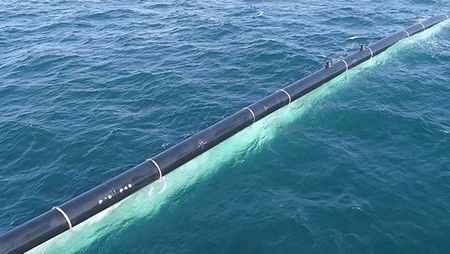 View on X
View on X"Meanwhile on the Pacific Ocean, the tow test is plowing through 10-15ft waves..."
via @boyanslat -
 View on Facebook
View on FacebookThe team is taking advantage of a calm weather window to inspect the 120-meter test section.
They just reported that the system came out of last week's rough testing conditions without significant issues. -
June
-
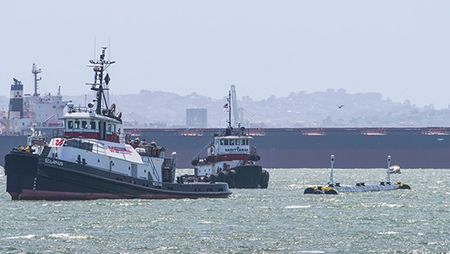 View on X
View on XThe offshore crew made it back into the San Francisco Bay after more than two weeks testing the 120-meter unit in towing configuration.
Test results will be shared as we process them. -
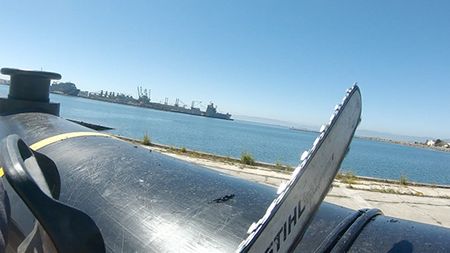
To watch this video, you need to .
For more info, check our cookie policy .
View on FacebookThis clip we received from the assembly yard could make you think the crew lost their mind...
... but the reason they just cut the 120-meter tow test unit in half is to move ahead with the assembly of the full 600-meter system. -
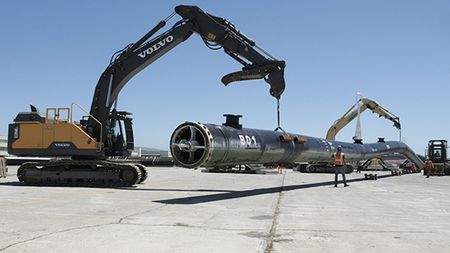
To watch this video, you need to .
For more info, check our cookie policy .
View on FacebookWith the tow test successfully completed, the yard crew received the green light to continue the assembly.
The test piece has now been cut in half, allowing us to put the remaining sections in between in the coming weeks. -
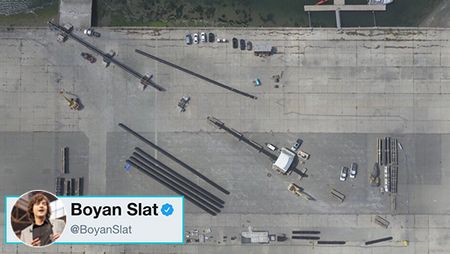 View on X
View on X"The Ocean Cleanup assembly yard from above. The black sub-assemblies are each 8% of the total length of the cleanup system. The white box is the welding station."
via @boyanslat -
July
-
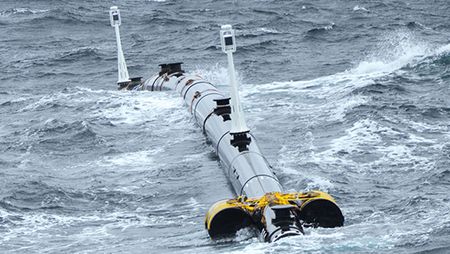 Read more
Read moreThe recently completed tow test was a crucial milestone on the road to the deployment of the world’s first ocean cleanup system.
The performance of the tow test unit left the team feeling more confident with this current design iteration and has exemplified that the system is ready for the challenge it is set to face in the Pacific. -
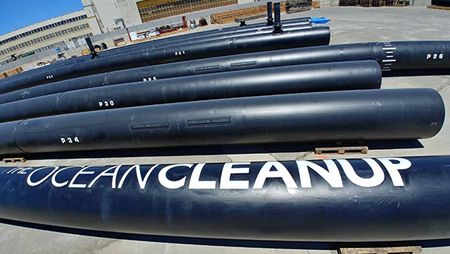 View on Facebook
View on FacebookThe crew has started the painting process.
This includes both functional markings, as well as logos and the soon-to-be-revealed name of the system. -
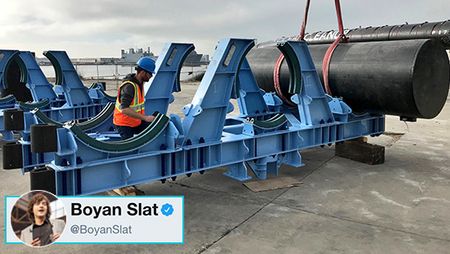 View on X
View on X"First stabilizer frames (preventing the system from rolling over) have arrived at the yard and will be attached to the main floater tomorrow."
via @boyanslat -
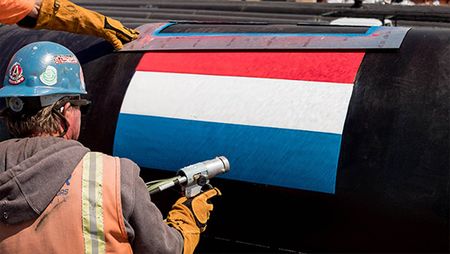 View on Facebook
View on FacebookThe world's first ocean cleanup system is Dutch.
Tomorrow, we'll be sharing its name. -
August
-
-
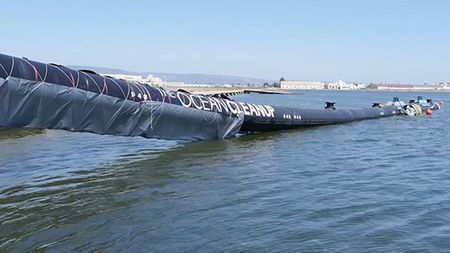
To watch this video, you need to .
For more info, check our cookie policy .
View on FacebookThe crew has started lowering the system into the lagoon. This operation will progress in sync with the skirt assembly.
Once completed, we will proceed with the installation of stabilizers and electronics. -
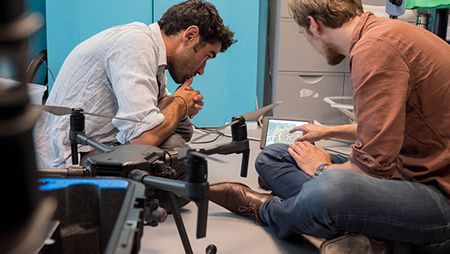 View on Instagram
View on InstagramIn Rotterdam, the research team is gearing up for a thorough data collection expedition, which will be running during the System 001 deployment.
-
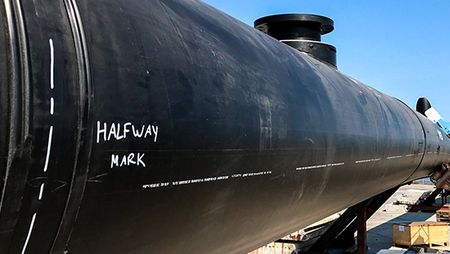 View on Facebook
View on FacebookThe system 001 assembly just passed the halfway mark.
A few numbers to put this in perspective: 353.03 meters of floater have been welded, 204 meters of skirt is now attached below it, 1632 bolts have been tightened to connect the two. -
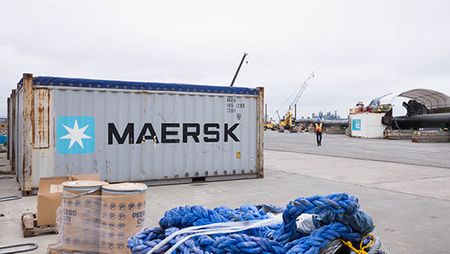 View on X
View on XThese empty containers just arrived at the yard. They will be loaded on our deployment and support vessel, the Maersk Launcher.
If all goes according to plan, they will soon come back filled with the first plastic collected by System 001. -
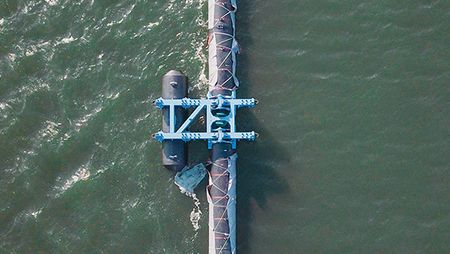 View on Facebook
View on FacebookWe are currently assembling the stabilizers of the cleanup system. As the name indicates, their purpose is to provide stability to the system and prevent it from rotating. In total, ten of these stabilizers will be attached to the system, consisting of either single or double floaters.
Note that on this aerial shot, we can clearly see how the floater absorbs the energy of the wind waves, which is the main driving force behind the cleanup system. -
-
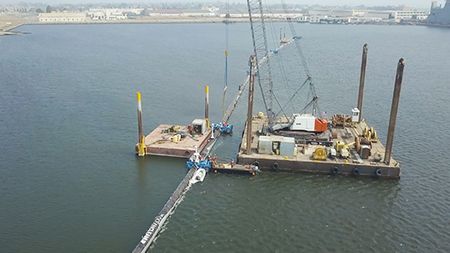
To watch this video, you need to .
For more info, check our cookie policy .
View on FacebookFirst footage of our full-scale cleanup system.
Assembly of final components to be completed next week. -
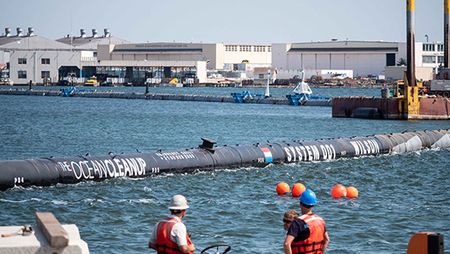 View on Instagram
View on InstagramWith the system now fully launched in the lagoon, the assembly crew has moved on to assembling the last stabilizers and solar-powered electronics.
-
September
-
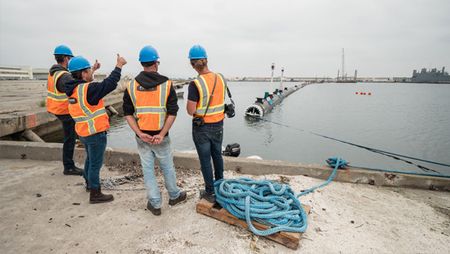 Read more
Read moreAfter six months of assembly, we can now announce that System 001 is officially complete.
After six months of assembly, we can now announce that System 001 is officially complete. It is currently positioned entirely in the Seaplane Lagoon – the sheltered body of water adjacent our assembly yard in Alameda. The cleanup system will make tow with the Maersk Launcher at Anchorage 9 on September 7th, the morning before the launch. -
 View on Instagram
View on InstagramNow fully assembled, System 001 is waiting for its ride to the Pacific next Saturday.
-

To watch this video, you need to .
For more info, check our cookie policy .
View on YoutubeThe Ocean Cleanup launched the world’s first cleanup system on September 8, from San Francisco Bay. Re-watch the launch.
-
-
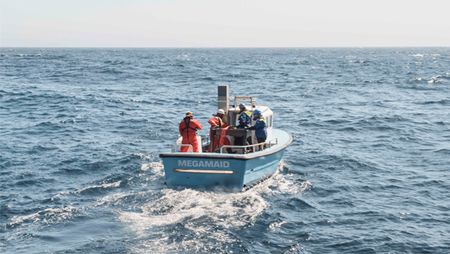 View on X
View on XMeet MegaMaid, our auxiliary vessel that will be assisting the plastic collection operations.
-
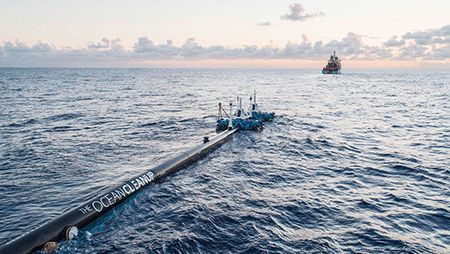 View on Facebook
View on FacebookAs we're approaching the test site, the crew is preparing the closing lines to lock the system in operational configuration.
At this point, the wind and waves will have helped the system form its U-shape. -
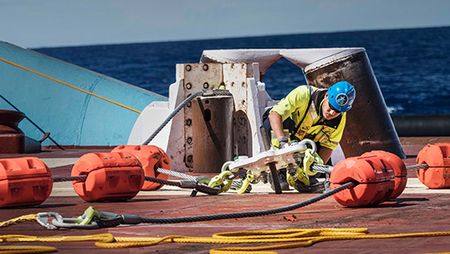 View on Instagram
View on InstagramOne of our crew members in action during the first successful installation of the closing lines.
Made with Dyneema®, these four lines connect to a central quad plate and help the system maintain its U-shape in any condition. -
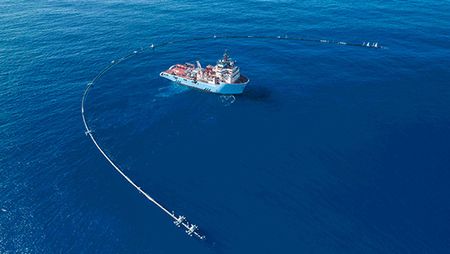 View on X
View on XClear blue skies and calm waters, perfect conditions to perform the first installation of System 001 at the test site.
The Pacific Trial phase has begun. -
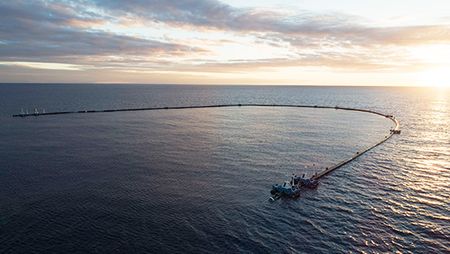 Read more
Read moreFollowing the successful launch from the San Francisco Bay, System 001 traveled 350 nautical miles to commence the Pacific Trials.
The trials will last approximately two weeks and are a crucial step before we take System 001 the remaining 1000 nautical miles to the Great Pacific Garbage Patch. -
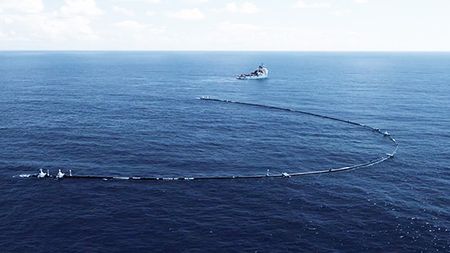
To watch this video, you need to .
For more info, check our cookie policy .
View on FacebookTimelapse drone shot of System 001 during one of the re-orientation tests.
If it performs well for the remaining tests, we will have another checklist item completed. -
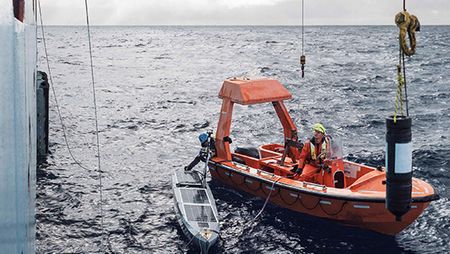 View on Instagram
View on InstagramUnfavorable weather over the last couple days prevented the offshore crew from running new tests.
Priority was given to daily system inspections as well as deploying our autonomous environmental monitoring drone ship. -
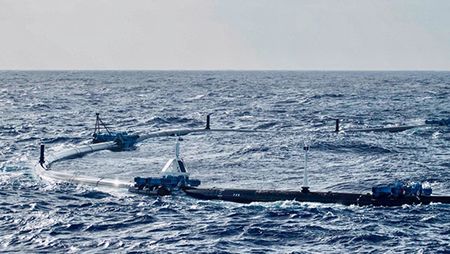 View on Facebook
View on Facebook14 days since the Pacific Trials began.
While the test plan is a little behind schedule, the engineering team has not yet seen any unexpected issues and aims to conduct the final tests this weekend. -
October
-
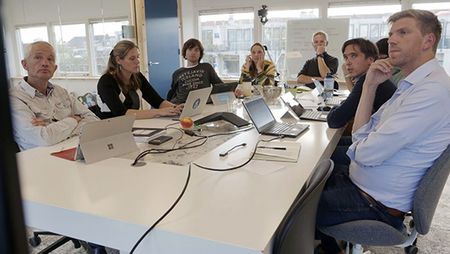 View on X
View on XAn important meeting is happening right now at The Ocean Cleanup HQ in Rotterdam...
The GO/ NO GO decision will shortly be made on whether to complete trials and head to the Great Pacific Garbage Patch. -
-
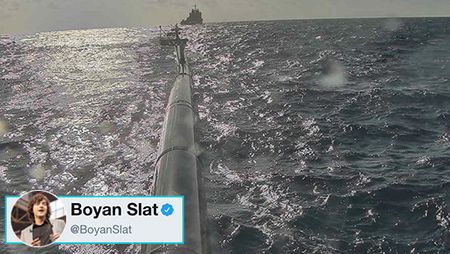 View on X
View on X"System 001 is back in towing config and is on it's way to the Great Pacific Garbage Patch right now"
via @boyanslat -
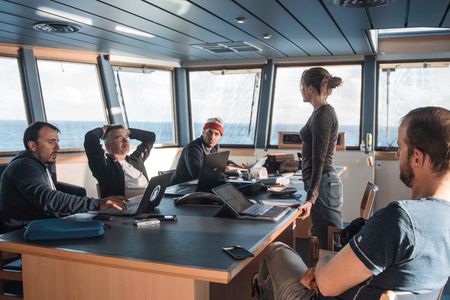 Read more
Read moreThe Go/No-Go meeting held earlier this week was the last chance for the team to bring concerns and issues to the table.
After two hours of evaluation and discussion, it was concluded that System 001 shall continue to the Great Pacific Garbage Patch. -
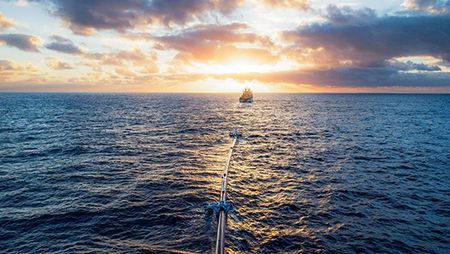 View on X
View on X430 nautical miles to go; System 001 is expected to reach the Great Pacific Garbage Patch deployment site by the end of the week.
-
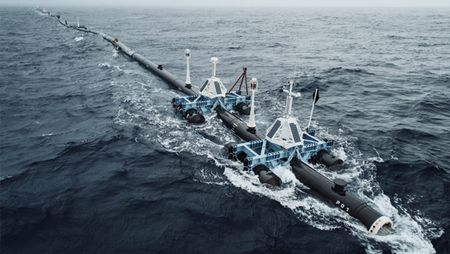 View on Facebook
View on Facebook50 nautical miles to go.
We are almost at the deployment location in the Great Pacific Garbage Patch at 143.83°W, 30.89°N. Roughly 50 nautical miles to go. -
-
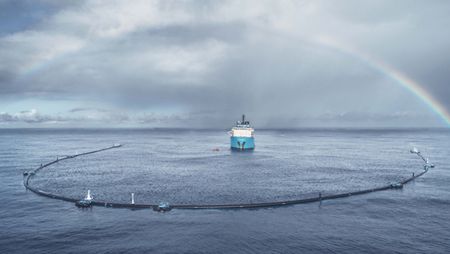 View on X
View on XInstallation successfully completed. Thank you to the offshore crew for your work. We are ready to start the cleanup.
-
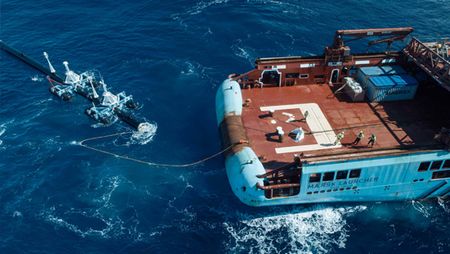 Read more
Read moreCleanup Commences: System 001 has Arrived
This week, we deployed System 001 in the Great Pacific Garbage Patch. In the upcoming months, we are hoping to confirm its plastic capturing efficiency and survivability; thus proving our technology. -
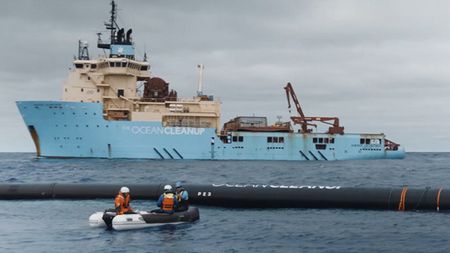
To watch this video, you need to .
For more info, check our cookie policy .
View on FacebookRecap of System 001's trials and deployment
Watch a recap of System 001’s trials and deployment. Project Manager Henk van Dalen explains the recent progress and steps forward. -
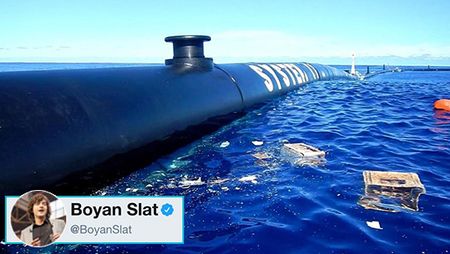 View on X
View on X"First plastic. It will still take a few weeks before real conclusions can be drawn, but some early observations: + very small pieces seem to get caught too + no interactions with marine life observed - plastic occasionally leaves system again. Now analysing behavior data to understand why"
via @boyanslat -
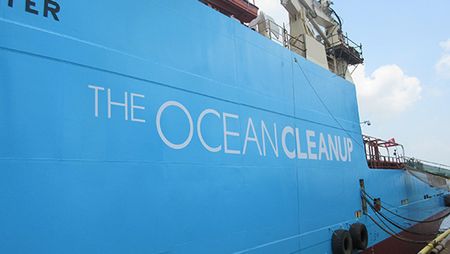 View on X
View on XMaersk Launcher left Wilson, soon to be relieved by slightly smaller Maersk Transporter to continue monitoring and plastic collection in the coming months.
We would like to thank the 30-person crew on board and Maersk, Maersk Supply Service and DeepGreen for making this first shift successful. -
November
-
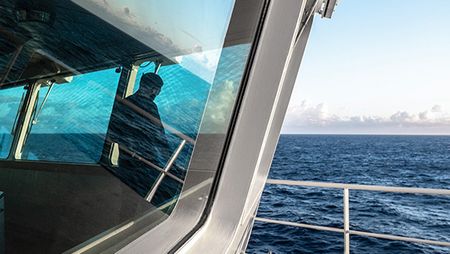
The second shift crew is approaching System 001 in the Great Pacific Garbage Patch after a brief transition period between vessels.
While the first shift focused on installation, evaluating performance and troubleshooting now take priority. First results and observations coming soon. -
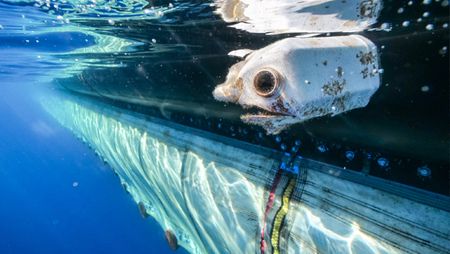 Read more
Read moreWilson Update - Tweaking the System
It has been four weeks since we deployed System 001 in the Great Pacific Garbage Patch. In this time, we have observed that plastic is exiting the system once it is collected, so we are currently working on causes and solutions to remedy this. -
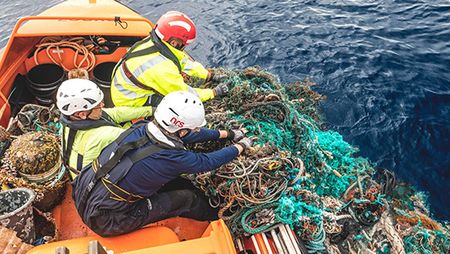 View on Facebook
View on FacebookWhile making adjustments to our cleanup system, the crew took the opportunity to recover this large ghost net drifting by.
Note: ghost nets account for 46% of the total mass of plastic in the Great Pacific Garbage Patch. -
December
-
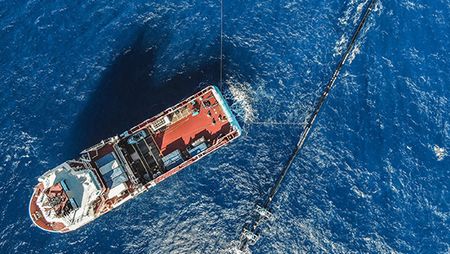 View on X
View on XThe closing line extension did not effectively increase the span of the system and, therefore, the speed did not improve.
Further approaches to widen the u-shape are being evaluated and tested by the team. -
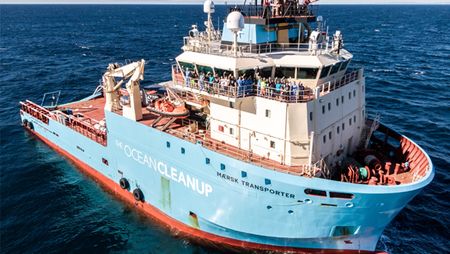 View on Instagram
View on InstagramShift 3 crew just left port, carrying new equipment to further investigate the cleanup system’s behavior and make adjustments.
After 6 weeks out at sea, our Shift 2 offshore crew completed its monitoring, data collection, and research mission. Shift 3 crew just left port, carrying new equipment to further investigate the cleanup system’s behavior and make adjustments. Detailed update coming up next week. -
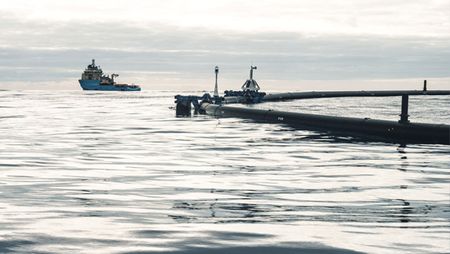 Read more
Read moreShift 3 has recently arrived at the System 001 location in the Great Pacific Garbage Patch (GPGP), where a series of tests will be conducted to help us understand why Wilson is not retaining plastic.
Through this, we hope to learn as much as we can to be able to apply tactical solutions on Shift 4 (departing in five weeks). -
 Read more
Read moreWilson to Return to Port for Repair and Upgrade
Due to a structural malfunctioning of the cleanup system, today we made the decision to return to port earlier than planned. We will set sail as soon as an appropriate weather window is available. -
January 2019
-
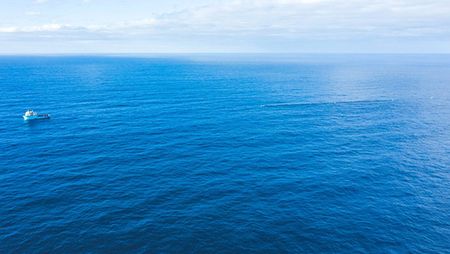 View on X
View on XSystem 001 has been safely opened and reconnected to the Maersk Transporter.
116 days after launching from San Francisco, the tow back to Hawaii for upgrade and repair has begun. Operations will resume as soon as possible. -

System 001 safely made it back to Hawaii. It is now steadily anchored in Hilo Bay where it will receive a complete above and underwater inspection in the next couple days.
This marks the end of the first attempt to deploy our full scale cleanup system and the start of our countdown to relaunch. -
February
-
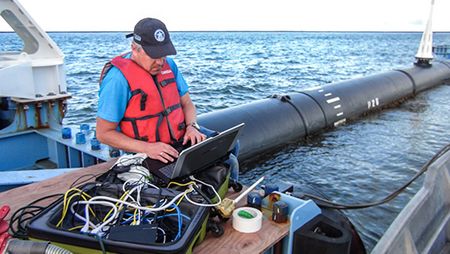 View on X
View on XNot exactly “just another day at the office" for our Head of IT who traveled to Hawaii to make sure we fully retrieve over 115 days worth of monitoring and test data from Wilson’s sensors.
This data will be playing a key role in the way forward for our system. -
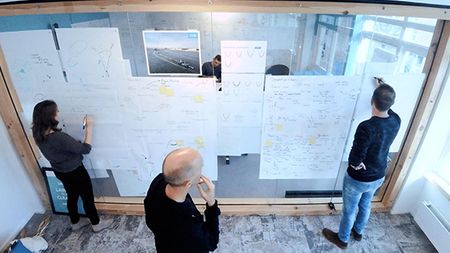
To watch this video, you need to .
For more info, check our cookie policy .
View on FacebookGood progress is being made on understanding the root causes of Wilson’s issues; we expect to finalize and share the conclusions in coming weeks.
With these results, we can begin modifications of the technology and plan for redeployment. -
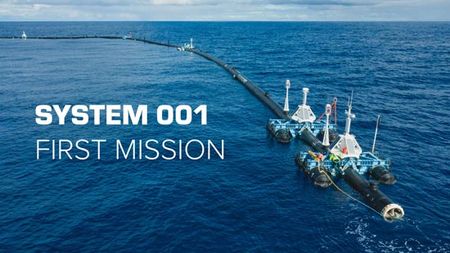
To watch this video, you need to .
For more info, check our cookie policy .
View on FacebookWhen learning by doing, discovering and resolving issues is an essential part of achieving success.
This is the purpose of System 001 and here is the story of its first mission. -
March
-
 Read more
Read moreSystem 001 Learnings - Root Causes Summarized
During System 001's 4 months offshore, key features of the cleanup system were confirmed. We also encountered challenges which became the subject of a root cause analysis. We now understand what happened and plan to relaunch in the patch within months. -
May
-
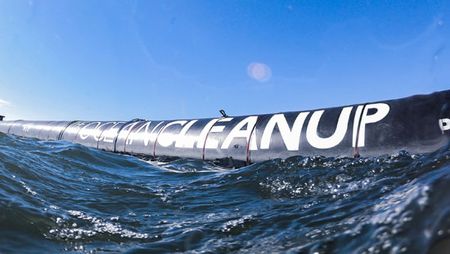 Read more
Read moreSystem Design Upgrades Completed, to be Relaunched in June
After the root cause analysis was finalized, the engineering team began working on solutions that we can start trialing in the Great Pacific Garbage Patch in June. Read more in our latest update. -
Now
Road to relaunch
With the understandings from the root cause analysis, the engineering team began to work on solutions that we could start trialing in the Great Pacific Garbage Patch (GPGP) in June. The upgraded design, which we have dubbed System 001/B, will entail various modifications that will be tested during our next campaign.
To watch this video, you need to .
For more info, check our cookie policy .
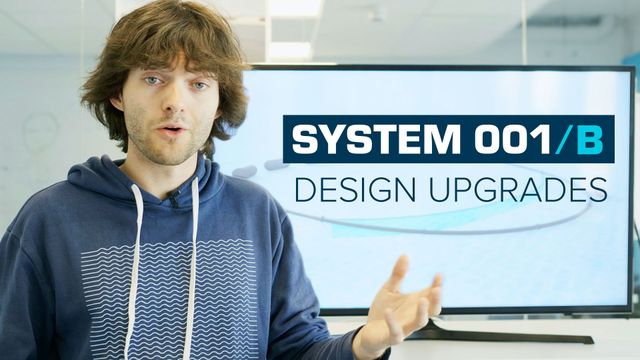

How it works
Our system takes advantage of natural oceanic forces to catch and concentrate plastic.
